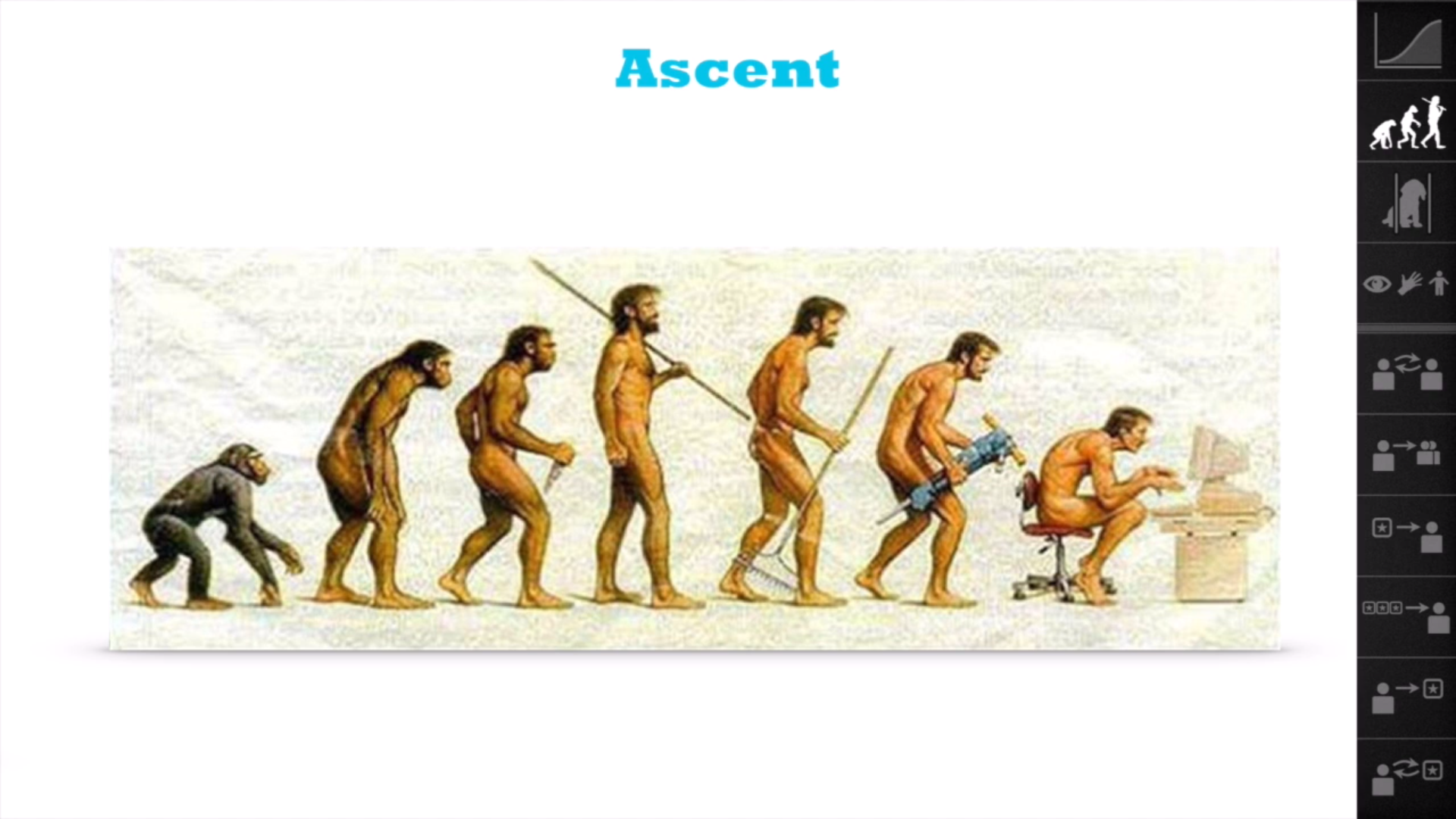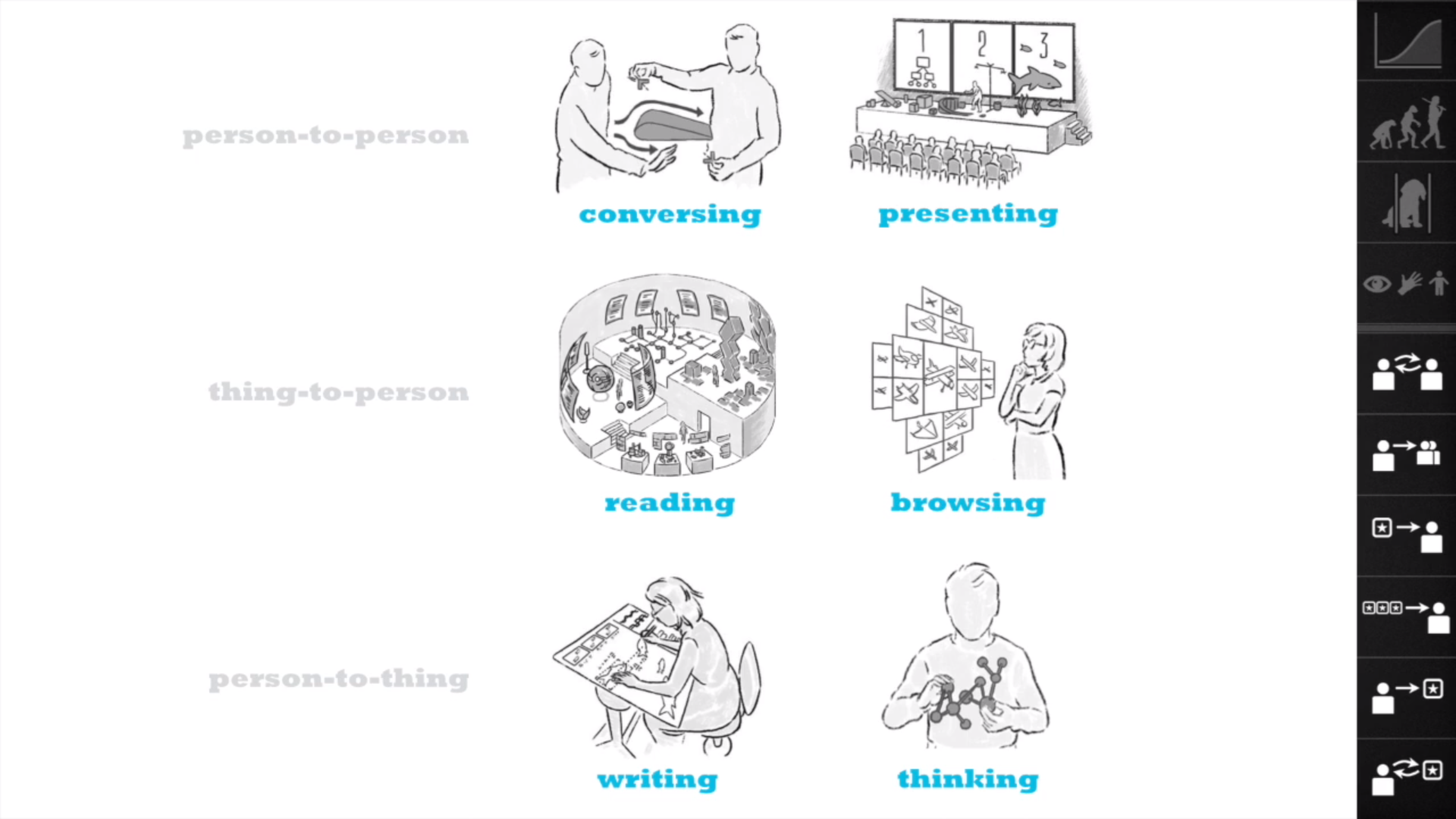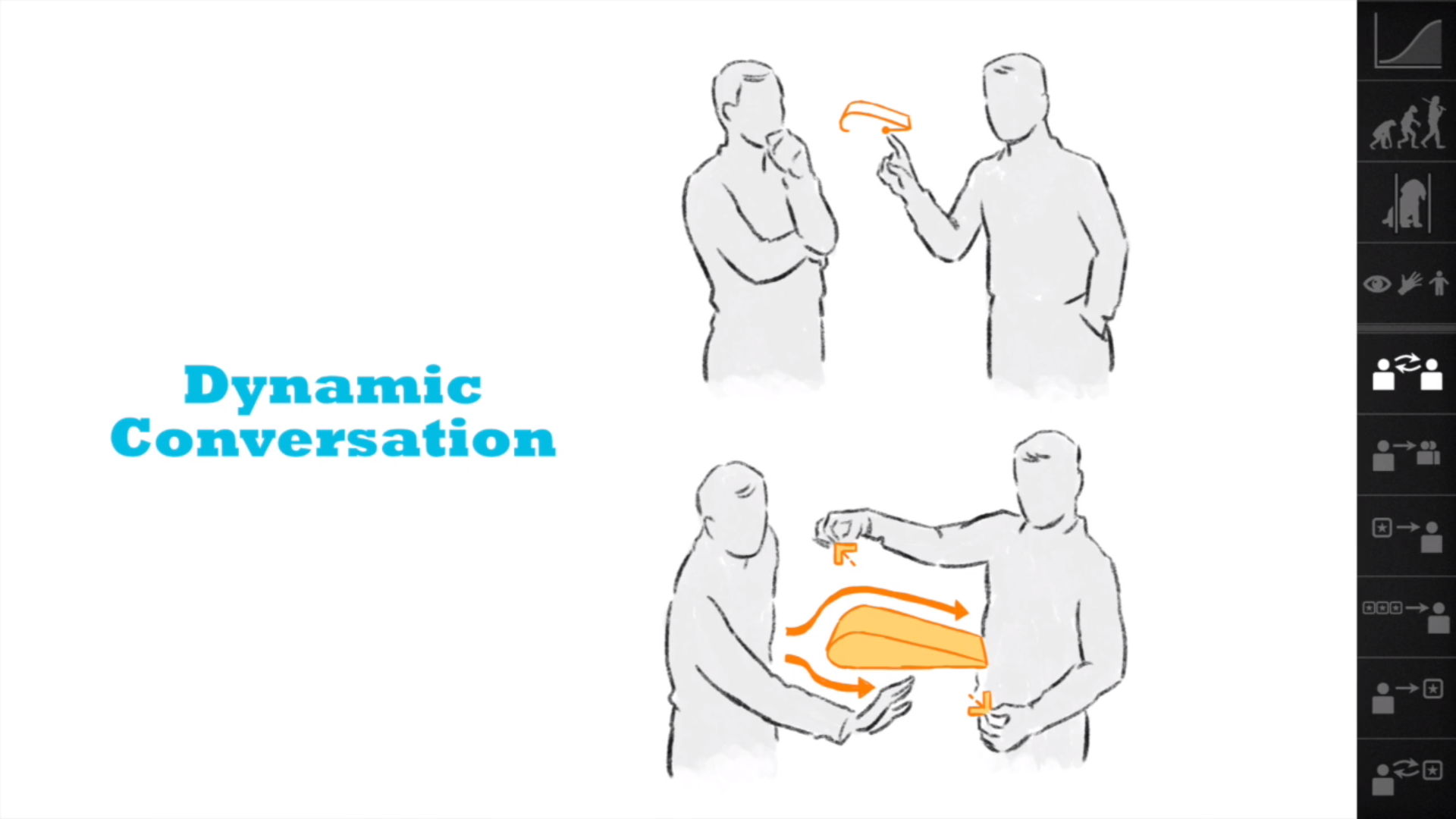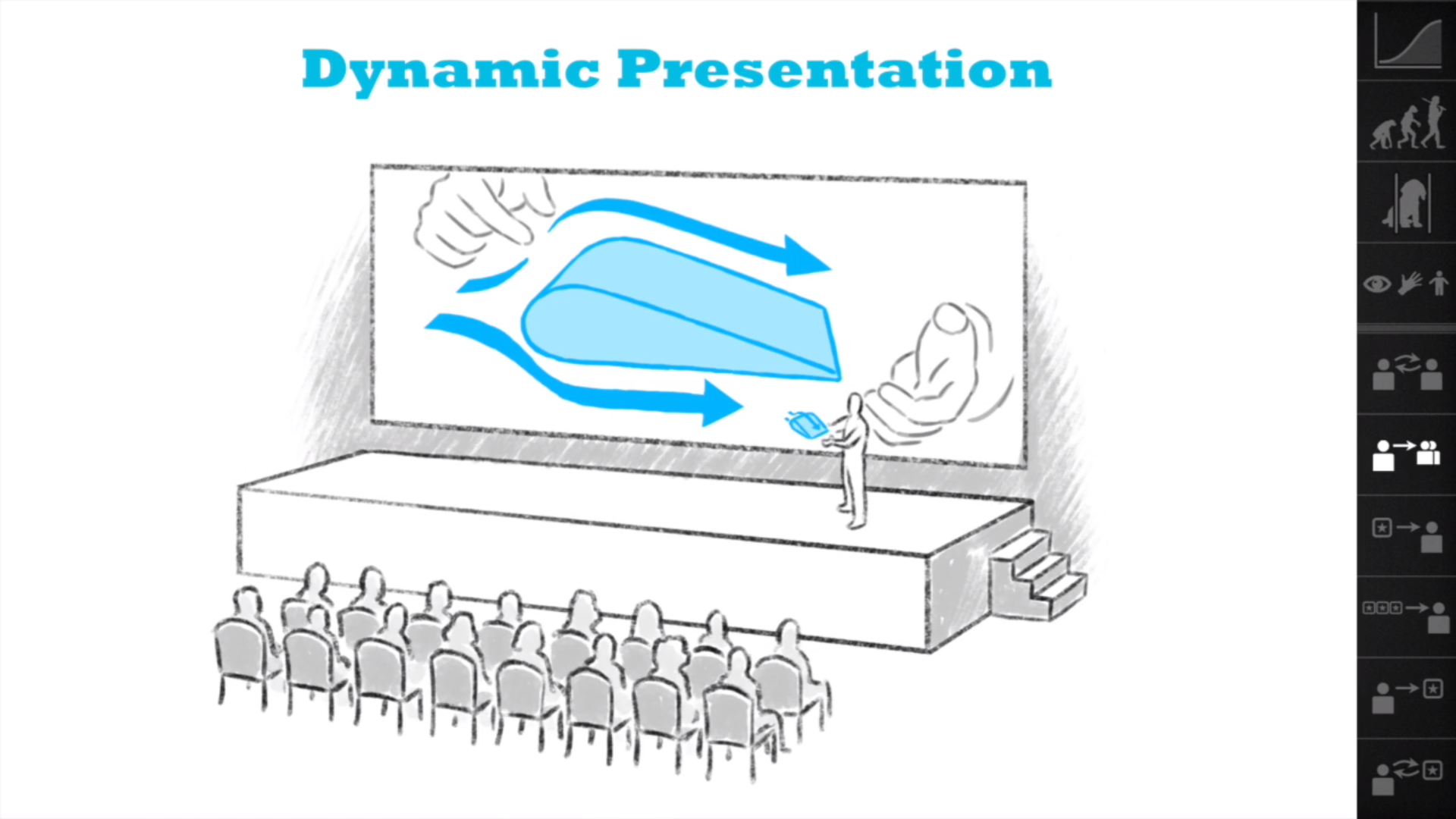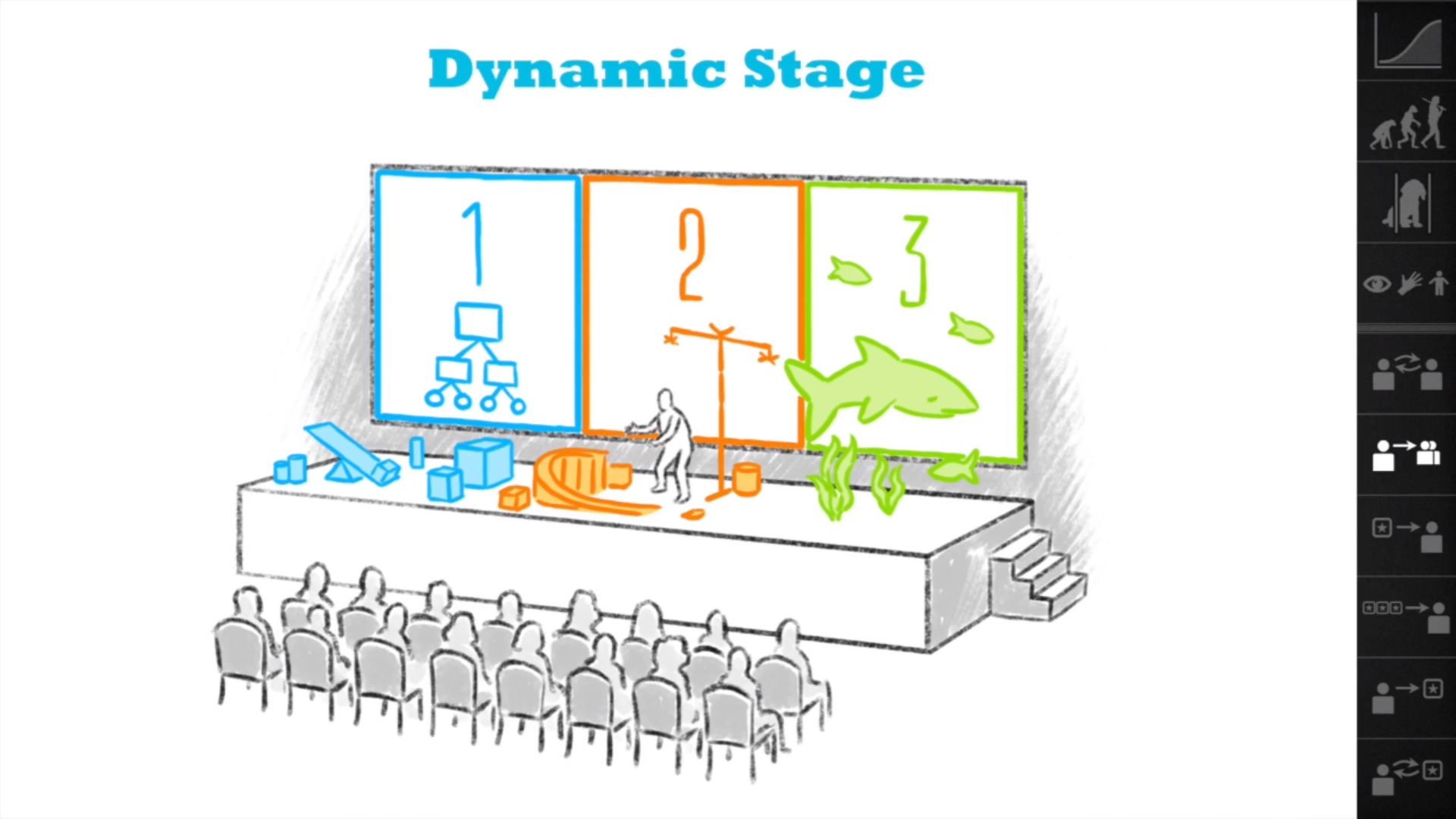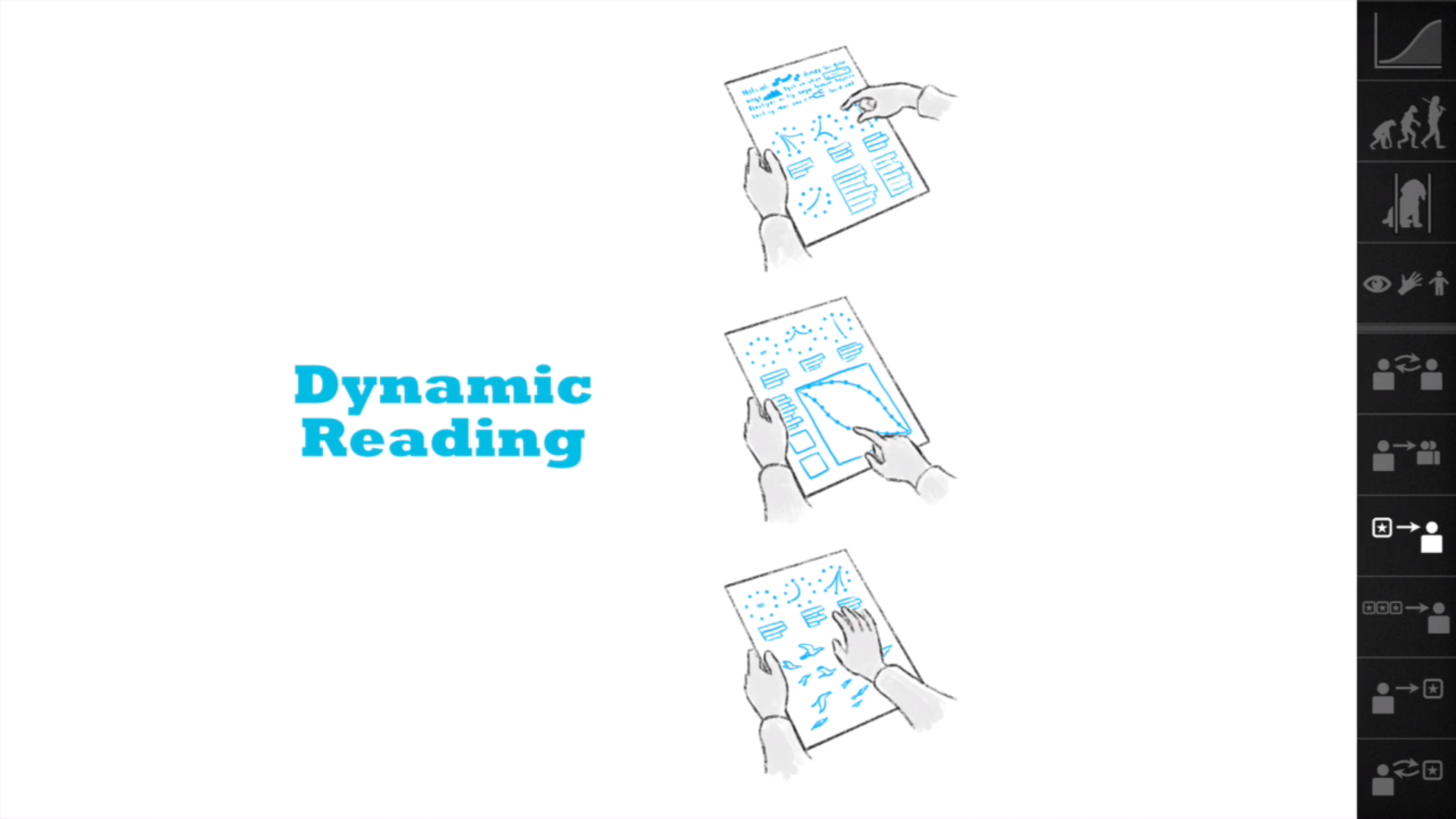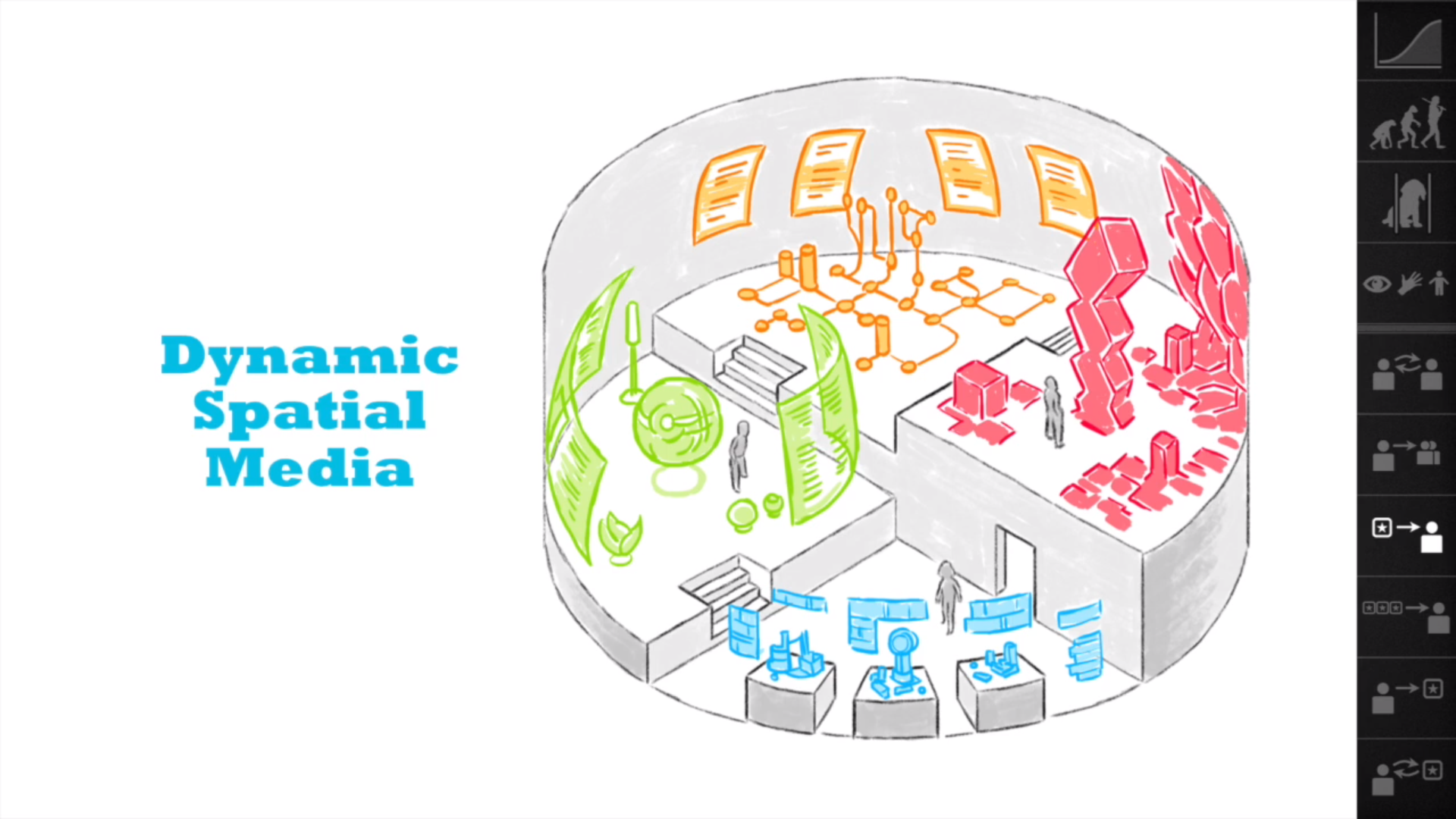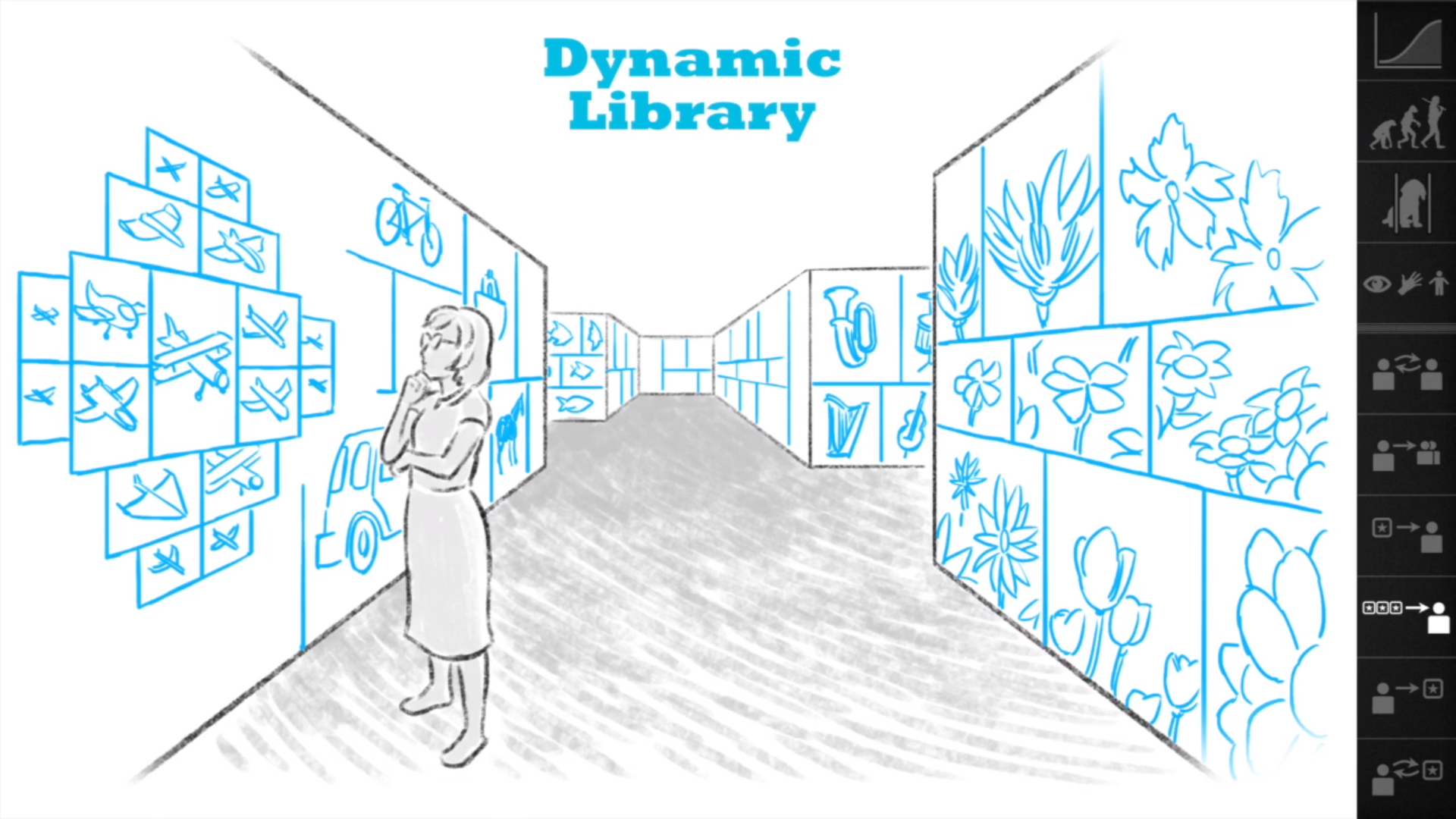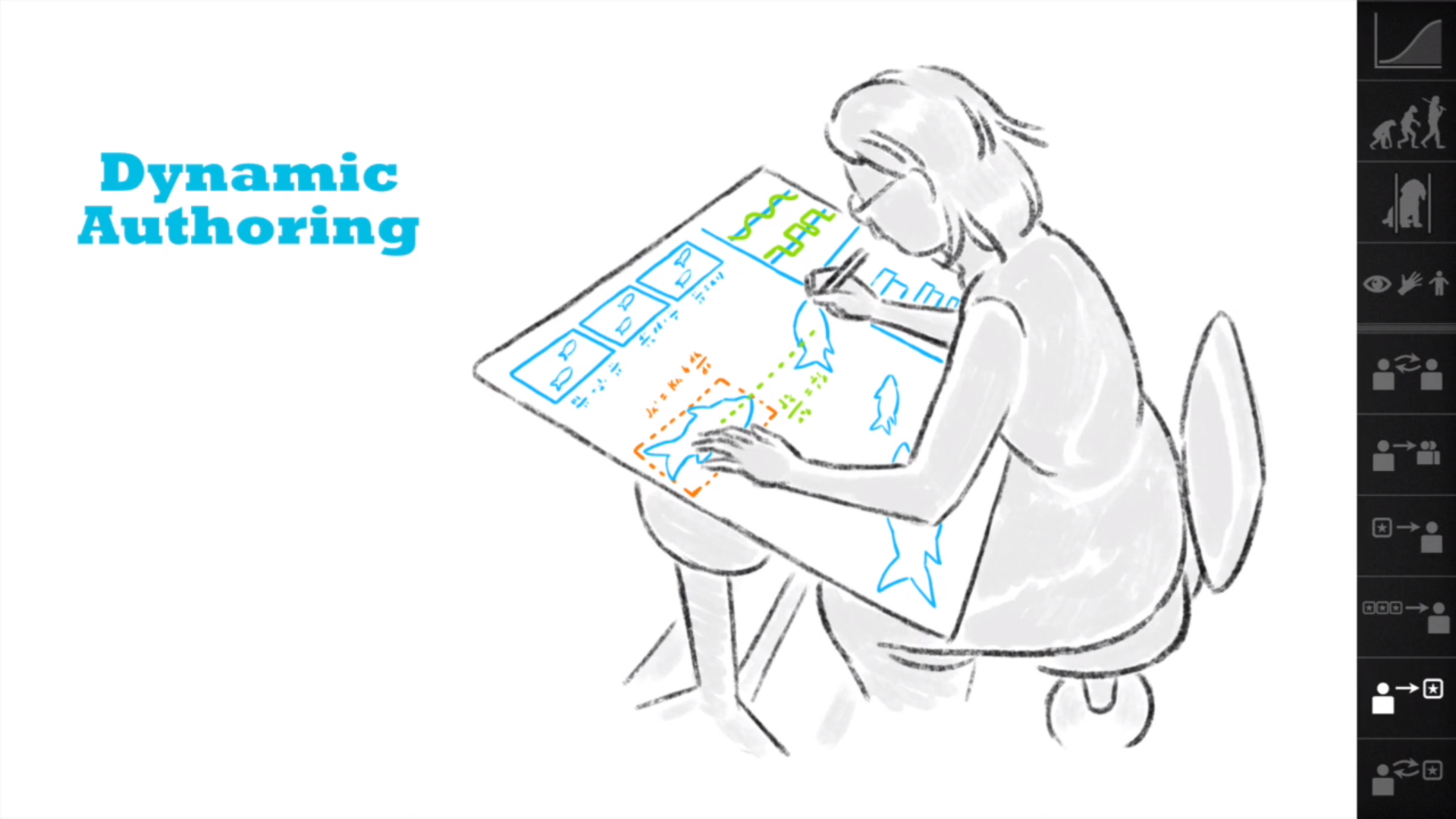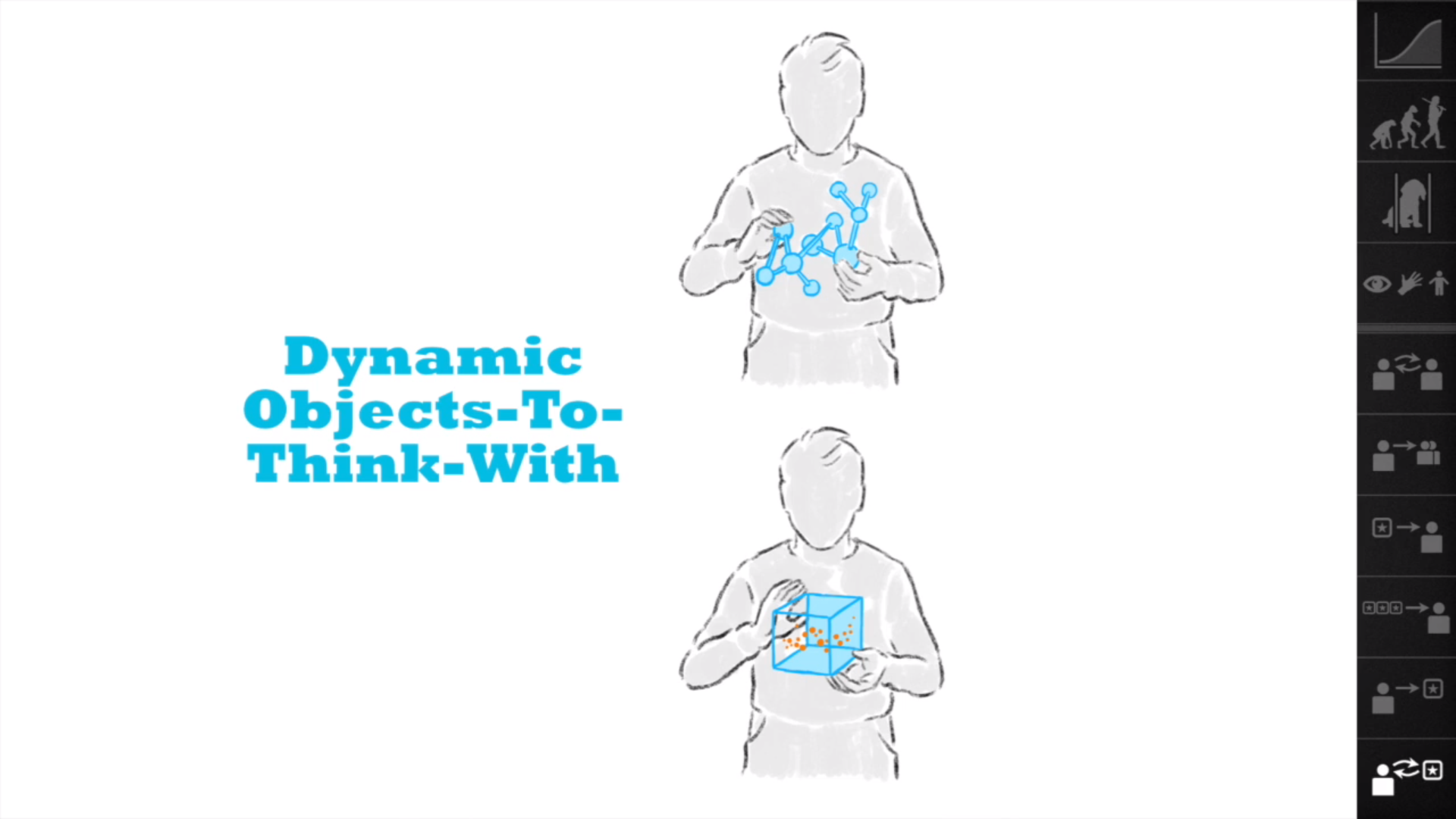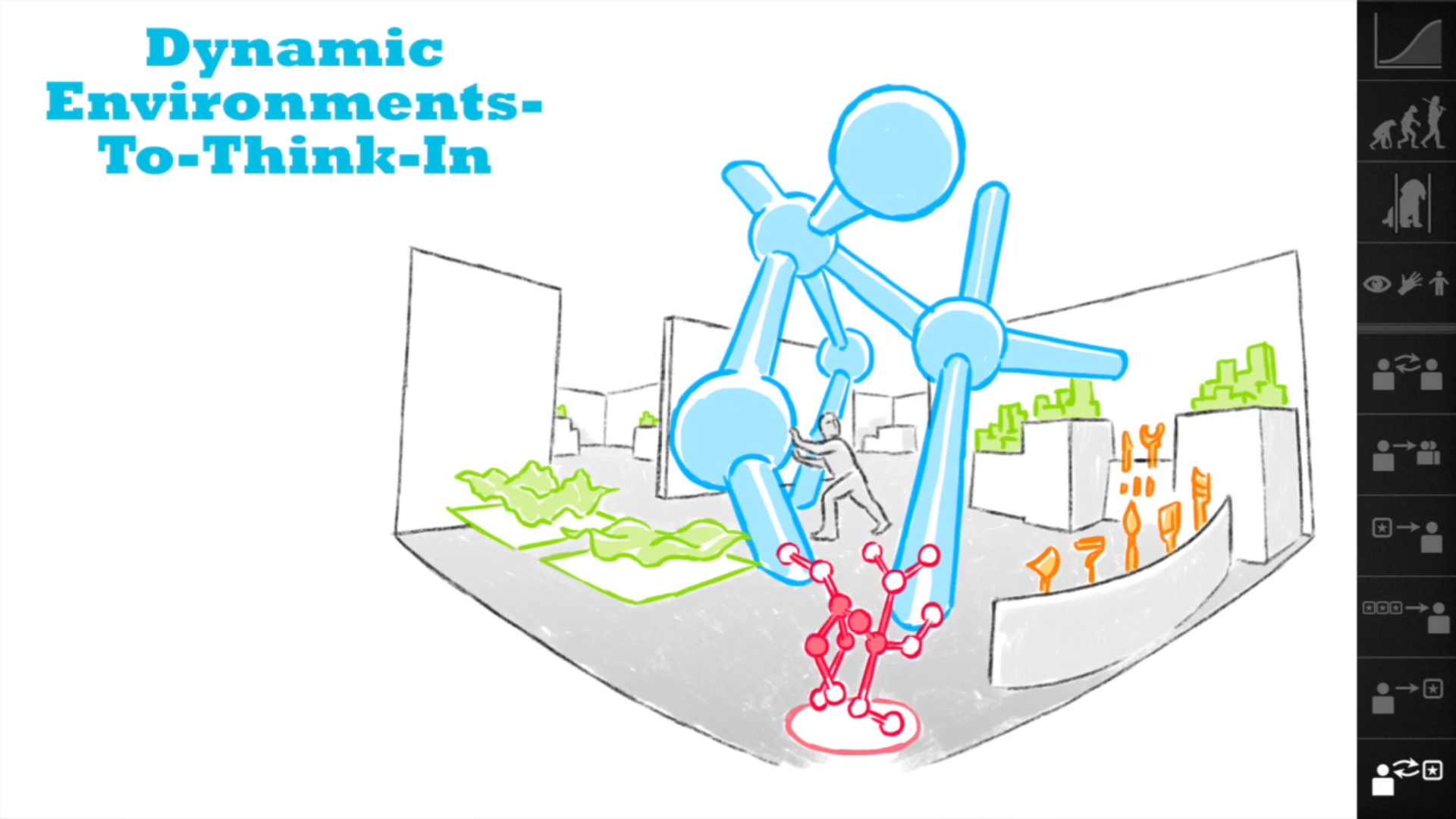- Images used in this note are screenshots of the video.
About the Speaker
Summary
In the talk, Bret Victor first explained why current media we have (mainly paper and computer) cannot unleash full potential of our human capabilities. Then, he showed us the possibilities of dynamic medium, which is more humane and empowering.
Corresponding time of a topic or a quote in the video is annotated with (time).
Representations, Ascent of Humanity, and The Inhumane Medium (05:04)
A powerful medium is what enables powerful representations to be used and seen and spread. (11:11)The way representations work is they draw on certain capabilities that we have, so if we go all in a particular medium, like we did with print, the capabilities that are not well supported in that medium, umm, they get neglected, and they atrophy, and we atrophy. (12:55)Modern lifestyle of knowledge work is inhumane.(14:42)We've invented media that severely constrain our range of intellectual experience.(16:06)
The Space of Capabilities (16:27)
A very vast and amorphous space of modes of understanding.
Multiple Frameworks (16:43)
About Paper and Computer (21:03)
Paper, or printed materials, and computer are primarily visual and symbolic. While printed materials such as papers and books offer tactile reponse since they're physical objects, spatial reponse in terms of bookshelfs and libraries, and iconic response when we draw and write on papers, computers offers non of these responses because we can't touch the content on the screen, we can't explore content like we do in a spatial environment except for staring at a small screen, and we can't draw and write smoothly with mouse and keyboard.
Dynamic Medium (25:07)
It has three properties :
- Computational : Be capable of doing simulation.
- Responsive : Be able to interact with a person and show results in many different ways.
- Connected : Dynamic materials can exchange information and talk to each other.
The Possibilities of Dynamic Medium
Conversing (32:10)
- Dynamic Conversation
In a conversation, one can show models of systems in real-time to help expressing ideas.
Presenting (37:20)
- Dynamic Presentation
- Dynamic Stage
Reading (40:45)
- Dynamic Reading (41:24)
Content should be context-sensitive, that is, what I read and what you read are not necessarily the same thing, because we may want to get different things from the material.
Also, content can be explorable models, which means the author is sending out a working thing that the reader can explore, instead of a big pile of words.
- Dynamic Spatial Media (43:22)
We can explore and learn things in a spatial environment with all our capabilities.
Browsing, Discovering, Connecting (44:50)
- Dynamic Library
Writing (45:55)
- Dynamic Authoring
The author need to be able to directly manipulate the content.
Creating new knowledge (49:12)
- Dynamic Objects-To-Think-With
- Dynamic Environments-To-Think-In
